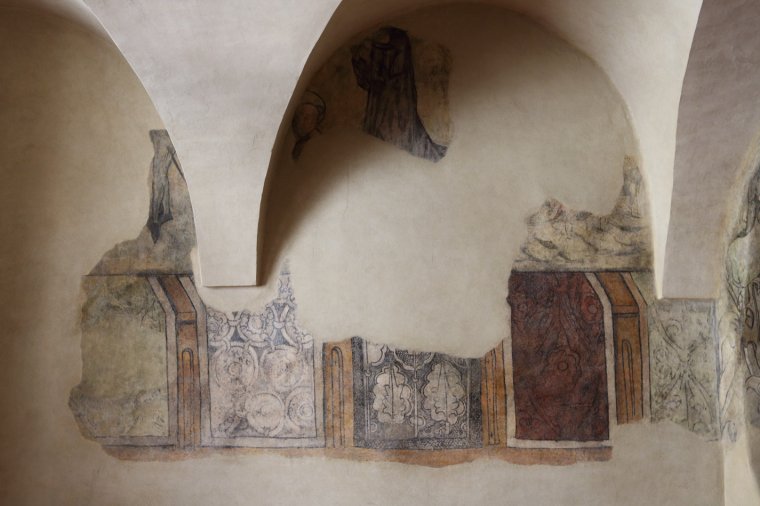House at the Golden Ring
History of the House at the Golden Ring
The beginnings of the House at the Golden Ring are related to its immediate proximity with the Tyn Court which in the Middle Ages served as a fortified refuge for foreign merchants arriving in Prague. Under the protection of Bohemian princes and kings, the merchants could lodge as well as store, declare, and sell their goods there. In the past, there was a defence trench as part of the fortification on the site of today's House at the Golden Ring. In the 13th century, the trench was backfilled and replaced by a barrier wall. Its fragments with embrasures have survived in the house's interior.
The house received its current layout in the second half of the 15th century by joining together two older houses. The earliest building stage is evidenced by two Early Gothic cellars, which survived in the house, dating from the second third of the 13th century. Further renovations took place throughout the 14th century. The first written record about the house dates from 1402, and it was first called the House of the Golden Ring (ad aureum anulum) in 1429.
Regarding the early period, fragments of Late Gothic murals have survived on the first floor as well as the Renaissance painted ceiling from the 16th century. The house was substantially renovated around 1609 when it was raised by another storey. The Late Renaissance oval skylight window above the entrance portal comes from that time as well as the crested vaults and spiral staircase in the entrance hall. The interiors were later partially renovated. In the 19th century, the courtyard balconies and outside facades were rebuilt in the Classicist style and the house sign – a 17th century relief of a ring – was replaced with a copy.
In the years 1990–2016, the Prague City Gallery administered the house and reconstructed it under the supervision of the architect Vlado Milunić. During the reconstruction, joist ceilings and murals were restored.


